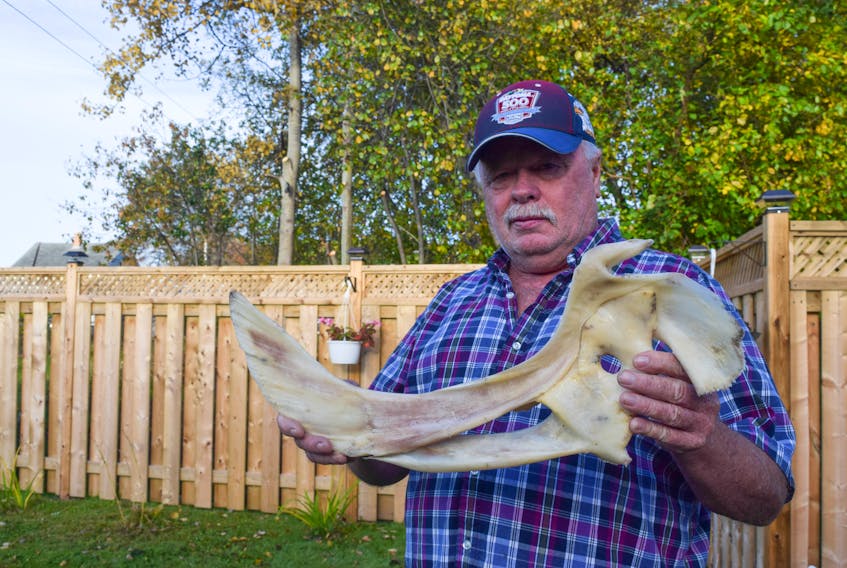Danny Irving was enjoying the unusually warm weather earlier this week in Pictou County and decided to make a trip to Melmerby Beach.
As he walked along the sand he noticed something drifting in on the water.
It was a large bone that appeared to be from large sea creature. He picked it up and took it home to investigate further.
He discovered it was about 22 inches long, but had no idea what it was, so phoned The News to tell his story and planned to contact the Northumberland Fisheries Museum in Pictou to see what it was.
“It’s not that old I don’t think,” he said adding that it still had a bit of a smell to it. He said he’s never found anything like it before during his trips to the beach.
The News reached out to the Museum of Natural History, where zoologist Andrew Hebda took a look at the photo and quickly identified the bone.
“That is called a cleithrum,” he wrote. “It is the bone against which the gill cover of a fish closes. That particular one belongs(ed) to an adult Bluefin tuna.”
He estimates that the tuna was probably about three to three and a half metres long.
“Occasionally you find complete skeletons on the beach, but usually come across the big bones (head and cleithrum). That is where they usually break off after the start of decomposition.”
There are a variety of things that could have caused this particular tuna’s death he said from ship strike, entanglement, or on rare occasion, possibly even by-catch.
He said it might be possible to tell if it had been caught by a fisherman if there were knife marks on the back edges of the bone.
“Otherwise, one of the many mysteries of the sea,” Hebda said.









